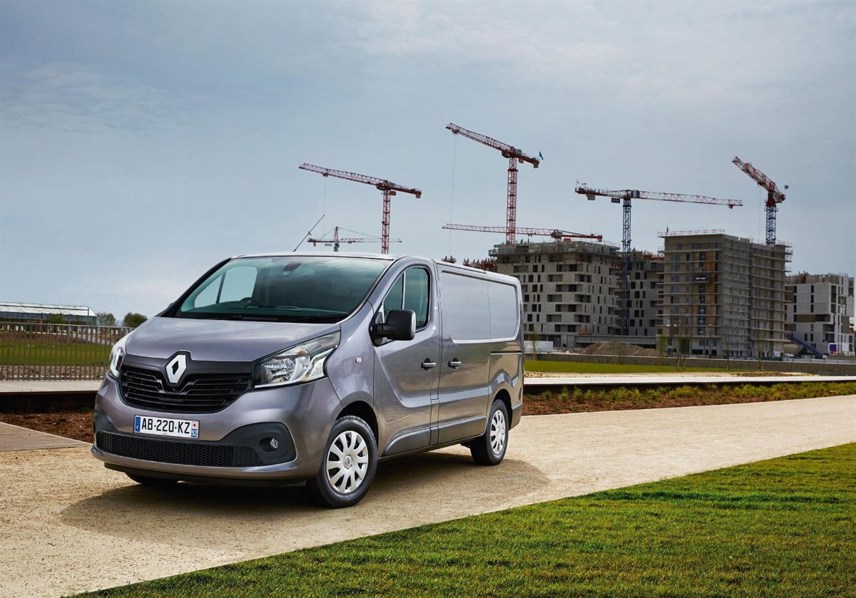Review
The Renault Trafic has been a massive success since its launch in 2001.
Some 13 years down the line, it can still hold its head up against the opposition. But the new incarnation, which is due to hit our shores in September, well and truly outstrips its predecessor in terms of style, practicality and economy.
The van has a revised exterior, a totally redesigned cab and dash, and new engines. Other features turn the cab into a mobile office, as well as including a system which links the van to a driver’s tablet or smartphone and special systems which enhance the van’s load-carrying capacity.
One thing missing compared to the previous Trafic is the bump in the roof of the cab. It was there originally to give the driver and passengers extra headroom, but there is no need for it now as the seat has been dropped by 36mm and the steering wheel put at a sharper angle to give the feel of an MPV rather than a commercial vehicle.
Both seat and steering column adjust in all directions and there is an extra 18mm of seat travel, so it should be possible for all drivers to find a comfortable driving position.
There are 14 stowage bins in the cab and most are specially-designed to fit particular items that van drivers might have, such as water bottles, coffee cups, mobile phones, notebooks, pens, hard hats and boxes.
The cab is also designed to be used as a mobile office. There is a clip for a mobile phone, another for an iPad and the back of the middle seat pulls down to reveal a little desk with an A4 clipboard that can be stood up right or removed to give a hard board for, say, a customer to sign for a delivery.
The passenger seats lift up to reveal a large storage area for bigger items that need to be hidden from view.
Renault offers its R&Go system, which opens up a whole new world of apps and technology in which the van can talk to a tablet or smartphone, as an option.
The van will be available in short wheelbase versions only at launch, but long wheelbase and high roof variants will be available later.
The SWB is 21cm longer than the outgoing model; 11cm extra at the front and 10cm at the rear.
While that doesn’t sound a lot, it means an extra 0.2 cubic metres of cargo space – up from 5.0cu m to 5.2cu m.
Three Europallets can now be accommodated and there are up to 18 load-lashing eyes in the cargo area.
An optional flap in the bulkhead means that longer loads can be pushed through and into the floor of the cab area. In the long wheelbase versions this means a load length of up to 4,150mm.
Another addition that we admired at the launch was a hanging frame in the roof that will accommodate items such as ladders or pipes without interfering with the floor of the cargo area.
It is evident that a great deal of thought has gone into this van when it comes to user-friendliness.
Three trim levels will be available – Business, Business+ and Sport.
The old 2.0-litre common rail diesel engine has been replaced by a smaller 1.6-litre unit which is around 5.8% more economical than the larger units.
Four engine options are available, two with a single turbocharger and two with twin turbos. The single turbo engines have power outputs of 90hp and 115hp while the twin turbo units produce 120hp and 140hp.
The more powerful units have a first low inertia turbo that gives high torque at low speeds, meaning swift getaway even with full loads on board.
The second turbo cuts in at higher revs for smooth acceleration to higher speeds.
These engines also have standard stop-start technology. Fuel economy is 40.3-47.9mpg while CO2 outputs range from 155g/km to 185g/km. Torque figures improve, too, and range from 192-250lb-ft.
We tested two versions of the Trafic – the 115hp single turbo and the 140hp twin turbo.
The more powerful model glided along smoothly and quietly and there was no lag between when one turbo stopped and the other kicked in.
The 115hp model had to work a little harder to keep up the power and felt less refined, although this is likely to be the bigger fleet seller.
The days when larger engines meant more power are well and truly over, and I found it hard to believe that there was only a 1.6-litre engine under the bonnet.
















